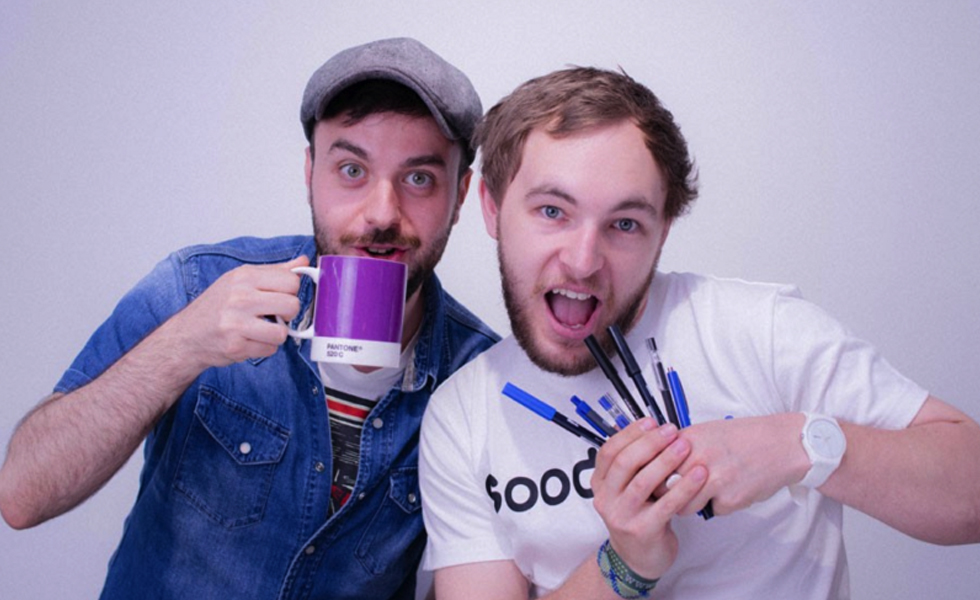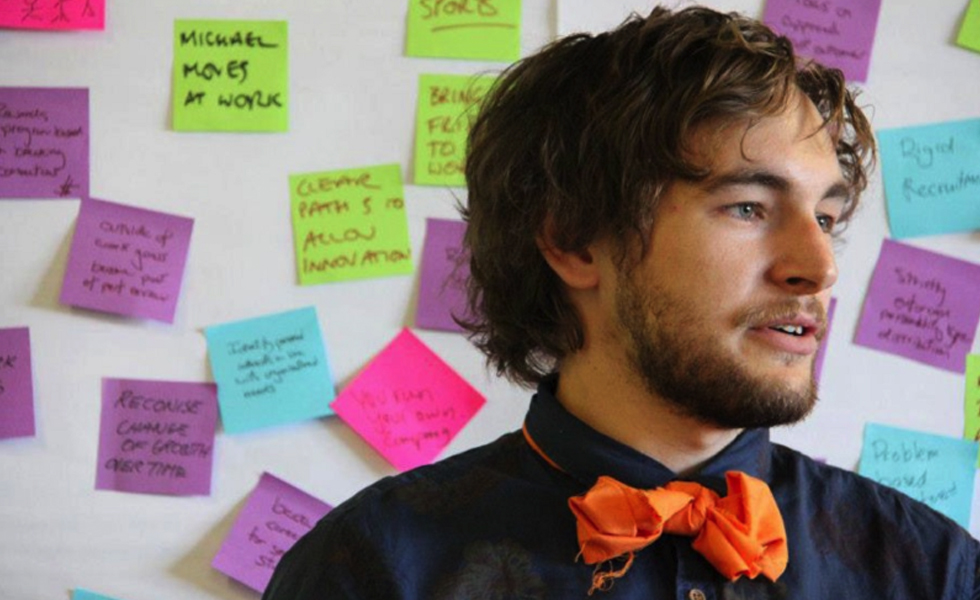People
Adam’s Super Swinburne Design Factory Journey — a student’s rocket-ship ride to the world of service design

James Andre, a student of Professional Writing at Swinburne
05 August 2016
Currently based in Berlin, former Design Factory Melbourne (DFM) graduate Adam Cochrane is now happily working as service designer for Japanese design company, GoodPatch. But Adam’s DFM journey has also taken him through some of the world’s leading design hubs from Finland, to Tokyo, to Germany.
After leaving high school, Adam studied a social responsibility, leadership training and community course, then travelled before deciding to study Industrial Design at Swinburne University. When he was about to enter his Honours year Adam heard about the newly opening DFM. Adam was excited when he heard that DFM would offer him a chance to directly work on industry projects. He was motivated further after speaking to the people who were setting up DFM.
“They spoke with such passion and the environment seemed right.”

Adam Cochrane (right) with a colleague from GoodPatch
Once he started studying at DFM, Adam discovered that there are no such things as ‘normal days.’ He found that the teaching methods moved away from the traditional classroom style of teaching, and involved ‘lots of group work, brainstorming, prototyping, presentations, crazy and fun challenges and games.’ He also enjoyed some secret late night jam sessions with the Aalto Design Factory in Helsinki, Finland, to break things up.
But it wasn’t all dance parties with the Aalto Design Factory, Adam also had the opportunity to work as a service design team leader on DFM’s Indigenous Smart Art (SmART) project. This project, the first of its kind in Australia, aimed to provide the ability for the digital authentication and archival of Indigenous art. One of the largest benefits for Adam was working with three stakeholders: Swinburne, an Indigenous art gallery, and the Government, with the end user being the Indigenous community.

Exploded view of the PaintPac design
After the SmART project, Adam’s next DFM adventure was working on ‘PaintPac’, in conjunction with cardboard manufacturer and recycling company, VISY. After licensing a new type of air-controlled packaging from Dutch company Flair, VISY approached DFM to explore practical uses for it. The students, including Adam, took this idea and ran with it to create PaintPac, a concept, which he and his team presented at Stanford University EXPE in the US, and at the DFM Gala 2014. The team designed an ingenious prototype that uses the package to squeeze out house paint, creating much less waste and leakage than from a traditional paint tin. Adam says that he gained huge insights from this project. Firstly, how a ‘waterfall hierarchy’, a traditional corporate hierarchy operates in the real world, and secondly, how realistic time frames operate; involving ‘a product moving from creation to development and implementation.’

One of Adam’s passions is facilitating design jams, intensive workshops to create solutions to a problem in 48 hours.
Adam has long been interested in helping out with social causes and small businesses such as Hand Up Australia and Open House Australia. The DFM helped Adam nurture this spirit, and subsequently introduced him to the global service design jams, mainly ‘JAM Melbourne’. These workshop sessions involve teams being assigned a design problem, which they have 48 hours to work on. At the end of the time, teams pitch concepts and prototypes. There are no rules, and Adam describes the jams as ‘intense.’ But this intensity is funnelled and focused into ‘team work, collaboration and experimentation.’ Adam still has a huge love for the jams, and helps to run the Service Jam Berlin.
“SDF is among the ‘best in the world for creating value, personal growth and networks.”
For those considering the DFM experience, Adam has some advice for both students and companies. He advises students that it will be ‘hard and some full time work’ but DFM is among the ‘best in the world for creating value, personal growth and networks.’ For companies interested in collaborating with DFM, Adam says they should approach DFM with ‘an open mind and to let the culture infect the core of your business structure. Allow DFM to be the excuse to make change because the price of DFM compared to the real world is peanuts for what you would pay.’
Whilst he still stays in contact with both staff and students, Adam hopes to one day return to DFM to be closely involved, and contribute again.
This story was written as part of a collaboration between Design Factory Melbourne and Swinburne PAVE. The collaboration enables Diploma of Professional Writing and Editing students to work on real-life journalism projects as part of their studies. This article is part of a series of case studies and stories around DFM published in 2016.
